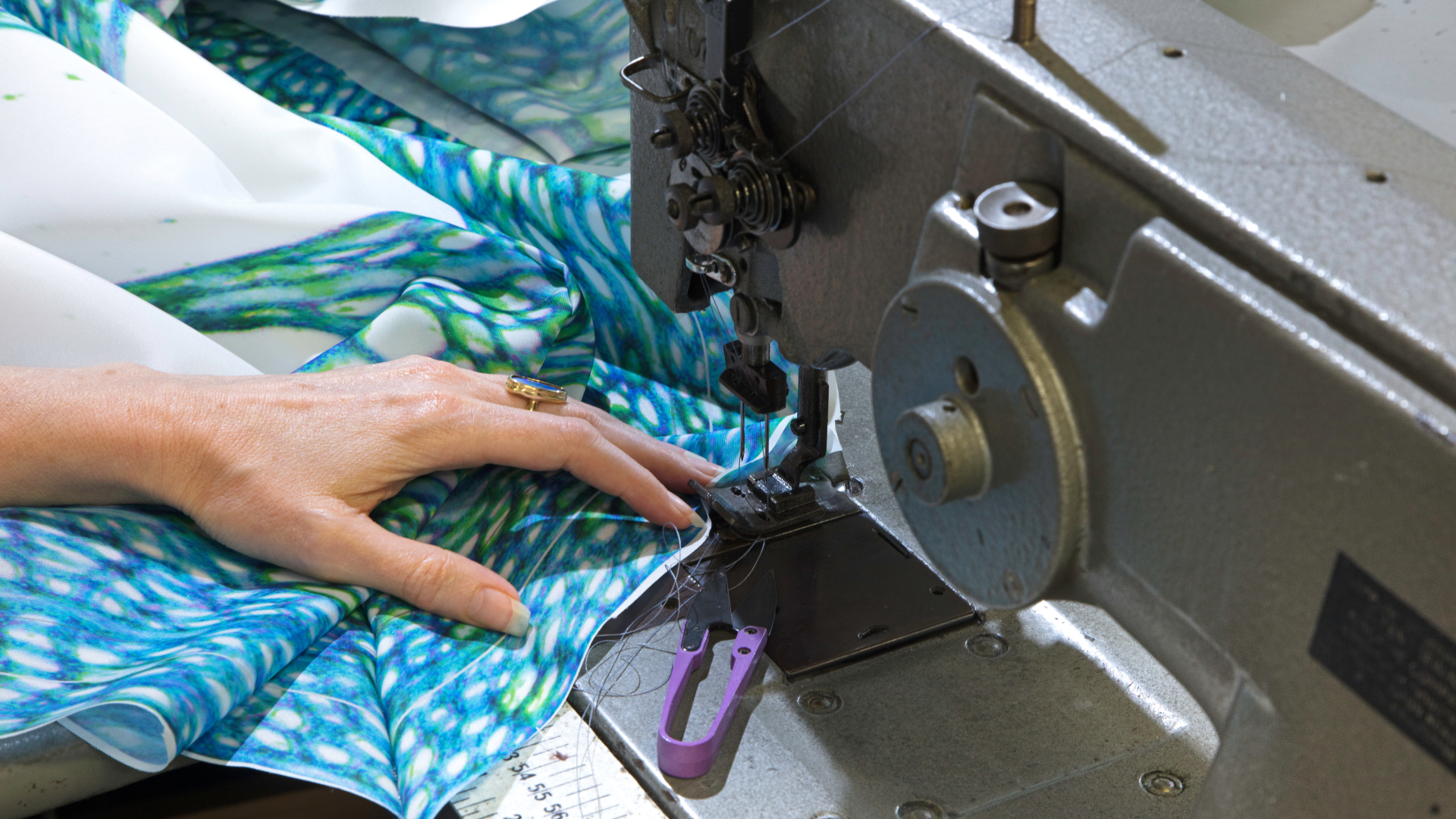Artistic details have been revealed for Overstory, a free-to-attend summer art installation from leading contemporary artists Ivan Morison and Heather Peak. The artwork will take root in Broadmead from Friday 19th - Tuesday 30th August – brought to Bristol by The Natural History Consortium, the charity behind the city’s Festival of Nature.

Image: Ivan Morison and Heather Peak, Overstory, 2022. © Jamie Woodley
A pair of suspended structures featuring microscopic imagery of trees, Overstory will hang above Broadmead for two weeks, highlighting the importance of urban tree cover in alignment with Bristol’s tree planting strategy to expand the city’s tree canopy by 2050. Overstory’s title is inspired by the 2019 Pulitzer Prize Winning novel by ecological author Richard Powers, focusing on the deep importance of trees and the fight to preserve them.
For the first headline cultural project for 2022/23 from Bristol’s City Centre and High Streets Recovery and Renewal programme, the artists were inspired by native trees across Bristol. The contemporary artwork will temporarily transform Broadmead, with visitors invited to enjoy the installation, alongside enjoying a programme of engaging, fun and free activities involving art and nature.
Overstory grew from the artists’ visits to Bristol’s stately homes, neighbourhood parks, suburban streets, gardens, estates, greens, and graveyards, to find two trees whose stories reflect the true spirit of the City. The artists explained: “We used to live among trees and now they live around us, when we should be living together symbiotically.”
Immersing visitors into the microscopic world of trees to celebrate and consider how they are folded into our lives through their presence around us, the artwork will represent their functions within our shared ecosystems, the stories they tell, and the role we can all play in creating and protecting natural spaces in our cities.
Featuring images of bright, microscopic cellular tree systems, the artwork comprises two geometric zig-zag canopies in the sky. The design blends vibrant shapes of the microscopic imagery with sharp, repeating folded lines, creating views that gradually change as the art is viewed from the ground below. The two artworks, both 65 m2 will be installed eight metres above ground at either end of Broadmead in the heart of Bristol.
The first chosen tree inspiring the creation of Overstory is a fairly anonymous Lime, buried deep near the back of Arnos Vale Cemetery. It sits on a muddy path, featuring an informal archway through its foliage, created by people pushing past. This Victorian cemetery was saved by the community who now care for and protect it, in a very Bristolian way, allowing people to enjoy its peculiar charms for free.
The second tree is the commemorative Oak that sits at the heart of Sea Mills Estate, planted over 100 years ago. The estate was one of the first to provide housing after the First World War, and a step towards the wider national introduction of social housing. The Oak still stands in the same place on the green today, in the middle of a thriving, well cared for community.
Overstory’s microscopic imagery was created by working in concert with the Royal Botanic Gardens, Kew and The Mesolab at the University of Strathclyde’s collections. Specimens from an Oak and Lime tree, imaged using advanced technology, reveal the complex organisation and hidden world of tree life at the micron-scale. The digital image of the Oak, produced by Alicia Musson, Collections Assistant at the Royal Botanic Gardens, Kew, is taken from a slide created by Jeanna Palmer-Wilson. The cross section of wood was imaged with brightfield illumination using a ZEISS Axio Scan Z1 microscope.
The Lime tree specimen was captured using the Mesolens, a giant microscope designed for high-resolution imaging of large specimens. Its founder, Professor Gail McConnell from the University of Strathclyde and current Chair of the Royal Microscopical Society’s Light Microscopy Section explained: “We are using the Mesolens to image many different kinds of biological specimens including plants, bacteria, and fungi; the bright features of the images are from naturally occurring molecules present in the tissues.” Dr Liam Rooney, Fellow of the Royal Microscopical Society and Research Associate at the University of Strathclyde added “This Tilia specimen demonstrates the complex organisation of cells arranged into specialised layers of tissues. Its tiny holes are sections of long tubes that transport nutrients and water along the stem of the plant.”
Overstory will invite the public to look consciously at the trees around them, they may be surprised by what they see, and are naturally drawn towards. Visitors to Broadmead can learn how to create, protect, and explore woodlands and forests in the region; and are encouraged to discover the local parks, wildlife reserves, and older neighbourhoods to experience the diversity of native trees around Bristol and the stories they tell about the city.
The artwork has been produced and curated by PONY, and commissioned with The Natural History Consortium, being delivered as one of the activities under the City Centre and High Streets Recovery and Renewal programme, funded by Bristol City Council and the West of England Combined Authority’s Love our High Streets project.
For more information, please follow social media updates on @nat_his_con and #Overstory.
Related
Comments
Nobody has commented on this post yet, why not send us your thoughts and be the first?













